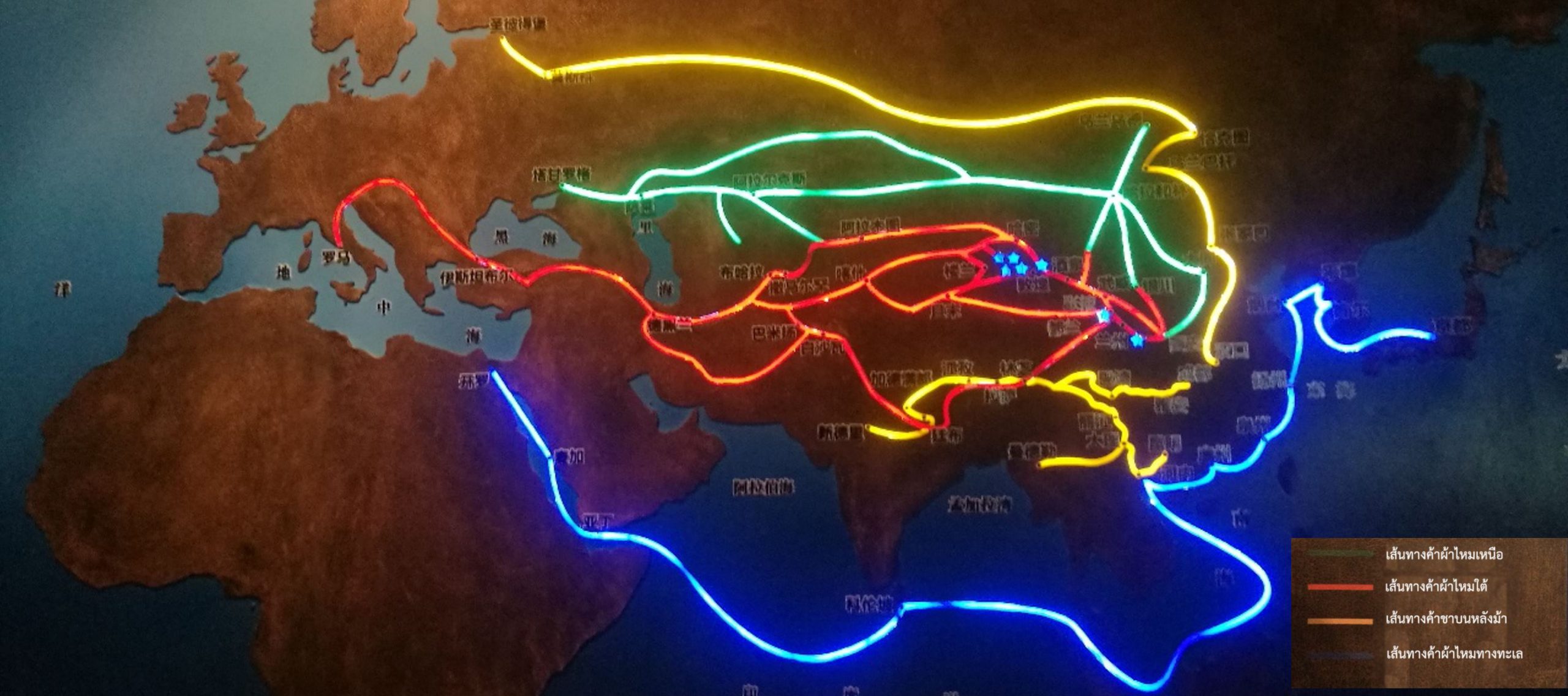(Chapter 4) From ancient Silk Road to Prosperity of Suvarnabhumi in China

(Chapter 4) From ancient Silk Road to Prosperity of Suvarnabhumi in China
Connection of ancient silk road in China (Xi’an to Dunhuang)
Archeological and Historical Evidences of Silk Road
Apart from evidences found at historical sites for new generations, past prosperity can be studied from ancient objects in museums, such as Gansu Museum where 420 pieces of objects with historical and cultural value are exhibited. Each item portrays stories about ancient commercial routes and evidences, such as earthenware, bronze ware, utensils made of jade, gold, and silver, and stone sculpture. In western China, Dunhuang Musuem exhibits stories about archeological and history evidences, for instance, ancient utensils, Indian Buddha statue, ancient painting, carved tile, carved stones showing various art of each Dynasty. Evidences about commercial routes of Chinese and European merchants on Silk Road locate the major frontiers of Dunhuang to access Europe; Yumen Pass to north and Yangguan Pass to south which reflect the commercial growth of Dunhuang. Exhibitions include trading journey of Marco Polo, explorer and merchant from Venice who travelled from Europe to China through Silk Road during 1271 to 1295 B.C.
By surveying connection between Silk Road and prosperity of Suvarnabhumi in the past, there are a lot of associated evidences, including objects such as Buddhist bronze ware which is similar to Indian objects, and Buddha statue which is similar to Asian style. Kitchen ware is similar to objects found in Thailand, such as tripod pot.
According to findings, association of Silk Road and Suvarnabhumi is more apparent in terms of religion and trade relationship. However, more surveys are essential to ensure in-depth study about factors that associate with Suvarnabhumi.

